We’ve all experienced the convenience of having a USB drive or stick to transfer data between two devices. They are so convenient and simple to use that they are our first choice for work, but sometimes the system fails to recognize your USB device, and the narrative may end there.
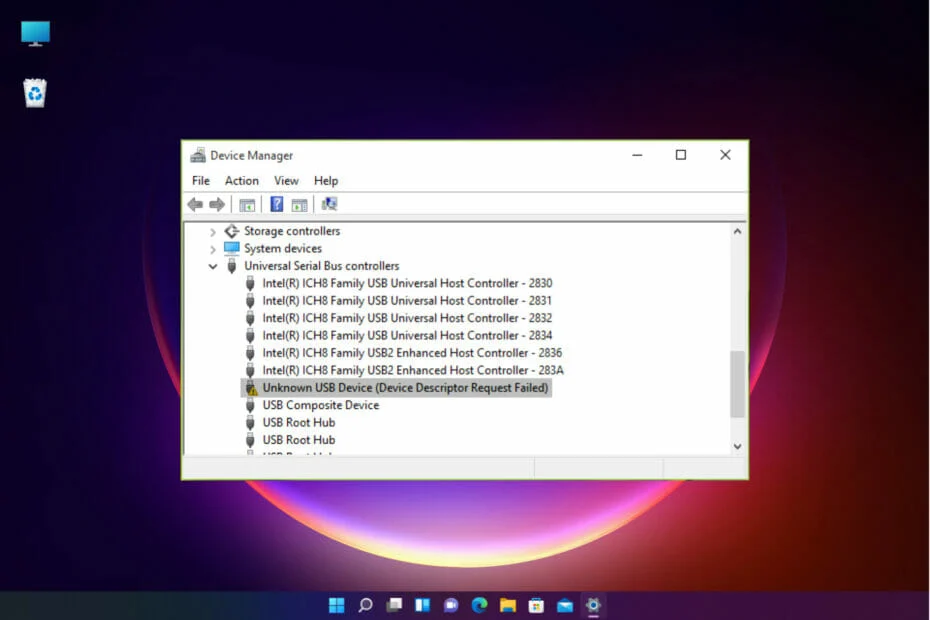
Many of our readers received the USB device not recognized notice, and when they examined Device Manager, they discovered an Unknown USB Device device (Device Descriptor Request Failed). The message was also delivered to some of our readers. The request for the USB Device Descriptor failed with error code 43.
Windows did not recognize the device. Don’t worry, we can simply remedy this, but first, let’s look at why this is happening in Windows 11.
Recommended Post:- Fixed: Virus and threat Protection not working on Windows 11
What causes a failed device descriptor request in Windows 11?
This is a bug that can occur on any Windows operating system and is not limited to Windows 11.
This problem can be caused by a variety of factors, the most common of which are outdated or corrupted drivers and hardware malfunction.
Also, if you have an ancient USB 1.0 device, the system most likely did not discover a driver for it. The problem could also be caused by system corruption, but this is less likely.
How do you resolve a device descriptor request failure in Windows 11?
Solution 1: Activate the Enhanced Power Management feature
This useful approach may be the quickest way to resolve the request failed error for your portable devices. As a result, carefully follow the procedures below to repair the USB difficulties.
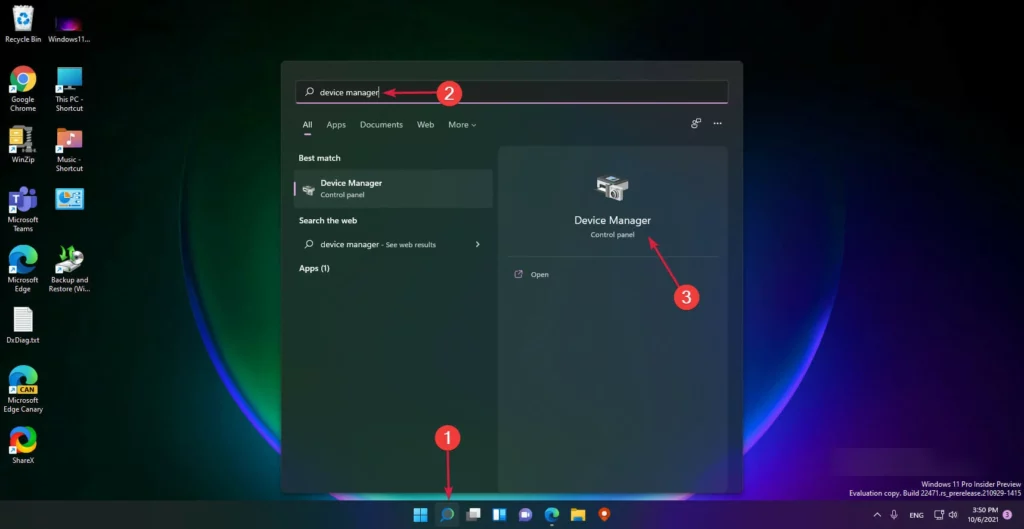
- Step 1: In the taskbar, click the Search icon, type device management, and then select the app from the results.
- Step 2: Navigate to the USB controllers area, right-click the faulty driver, and then choose Properties.
- Step 3: Go to the Details tab, choose the Device instance path, and then highlight the value in the Value column, right-click it, and select Copy.
- Step 4: Now, hit Windows + R to open Run, type regedit, and then press Enter or click OK.
Navigate to the following path and replace device instant path> with the path you copied in step 3: HKEY_LOCAL_MACHINE\SYSTEM\CurrentControlSet\Enum\<device instant path>\ Device Parameters - Step 5: Right-click in the right pane, select New, then DWORD Value, and name it EnhancedPowerManagementEnabled.
- Step 6: Set the Value data to 0 by double-clicking the new key, then click OK.
- Step 7: Close Registry Editor, unplug the USB device and restart the computer.
- Step 8: Connect the USB device after restarting, and the problem should be resolved.
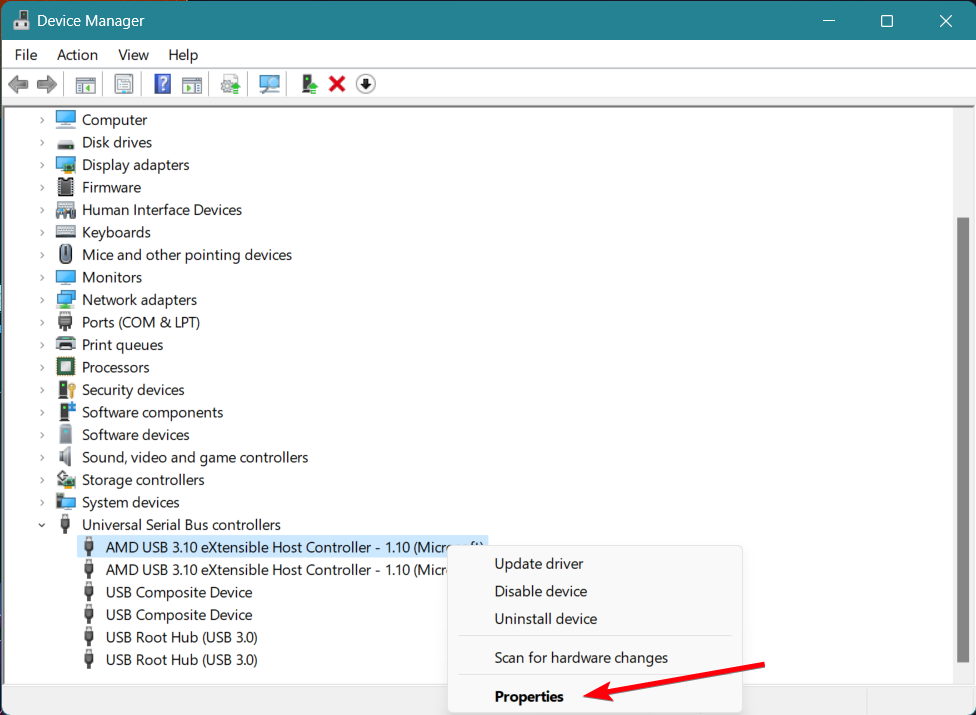
Solution 2: Drivers for USB devices should be updated
- Step 1: Open Device Manager by right-clicking the start button.
- Step 2: Locate the Unknown USB Device under Universal Serial Bus Controllers.
- Step 3: Right-click it and choose Update.
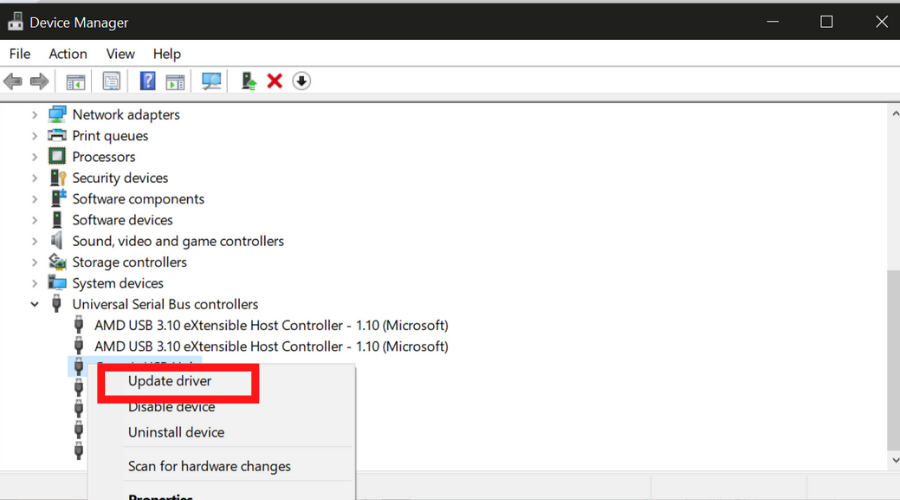
Windows should now check for and install the most recent USB driver version. It may not always be able to detect the best version, in which case we recommend using a specialist driver updater.
Solution 3: Use the Troubleshooter for Hardware and Devices
- Step 1: From the taskbar, click the Search icon, type cmd, and then select Run as administrator from the results.
- Step 2: To run it, type or paste the following command and click Enter.
- Step 3: Next, press the Next button to launch the Hardware and Devices troubleshooter.
- Step 4: If the system discovers a solution, select Apply this fix.
- Step 5: Click Enable in the following window to allow Windows to check for drivers when a new device is installed.
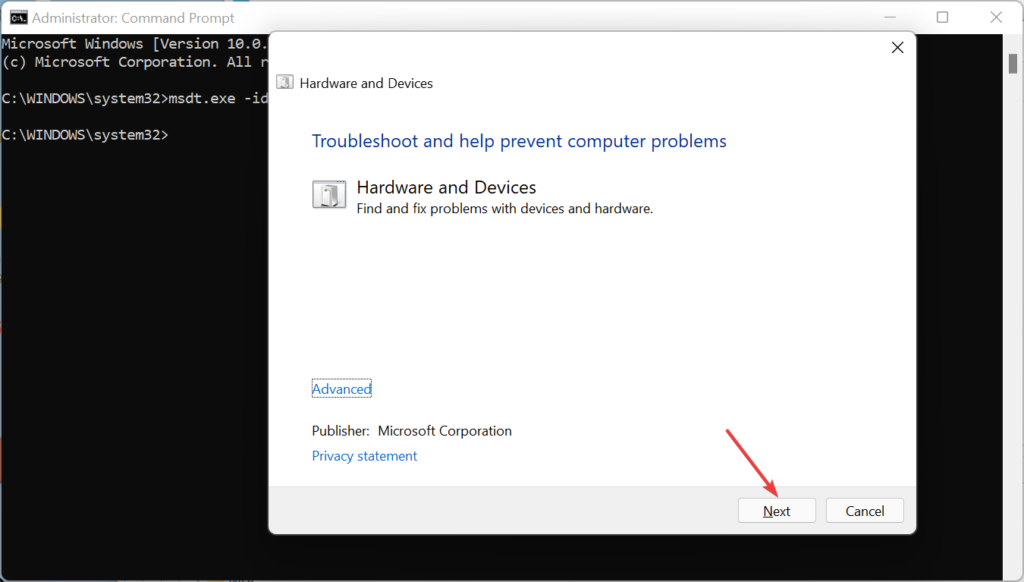
Microsoft deleted the Hardware and Devices program from the troubleshooting settings a long time ago, but you can still use it, even on Windows 11.
And, as you can see, it can be quite useful in situations where the USB device is not recognized by the OS.
Solution 4: Uninstall the gadget
- Step 1: From the taskbar, select the Windows Search icon, search device management, and then select the app from the results.
- Step 2: In the USB controllers section, locate the faulty driver, right-click it, and select Uninstall device.
- Step 3: Disconnect the device from the USB port, restart your computer, and then re-insert the device.
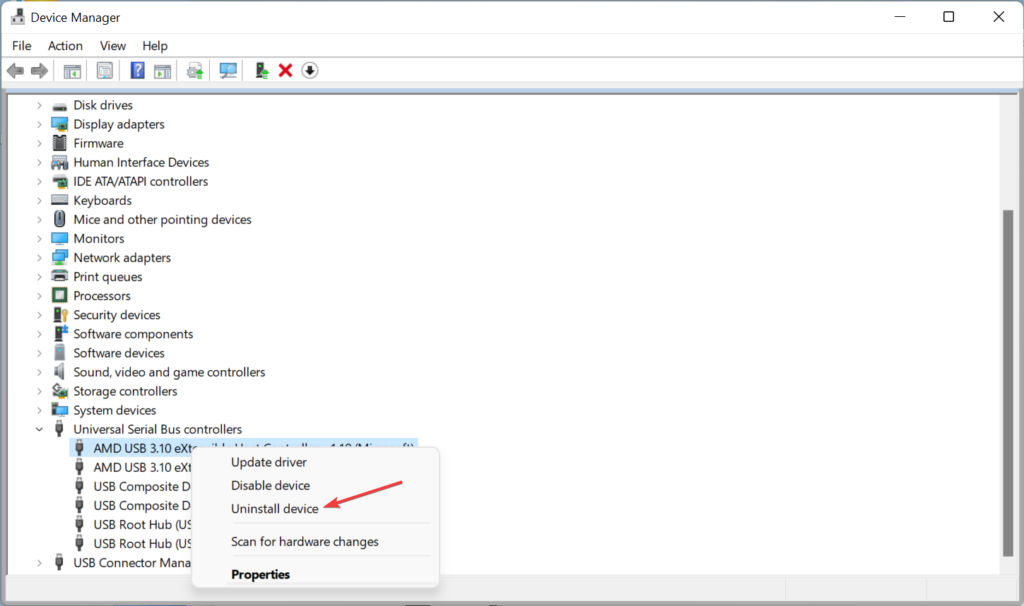
If your USB device is older but came with its dedicated driver, utilize that software to properly install your device.
You might also try going to the manufacturer’s website and seeing whether it has the correct drivers for your system.
Solution 5: Windows should be updated
Installing the most recent Windows update may resolve the “Device Descriptor Request Failed” problem. Follow these procedures to install the most recent Windows update:
- Step 1: Launch the Settings App by hitting the Windows key plus I.
- Step 2: Select the “Update & Security” tab.
- Step 3: Go to the “Windows Update” tab.
- Step 4: Select “Check for updates” from the drop-down menu.
How can the Device Descriptor Request Failed error be avoided?
This is a typical issue that can occur whenever you connect a new USB device to your PC, but there are a few things you can do to avoid it.
Connect the gadget to the PC directly
We all know that a PC or laptop never has enough USB ports to accommodate all of your gadgets and that it is sometimes necessary to use USB extenders or hubs.
However, these can frequently fail or be incompatible, so connect your USB device straight to an empty port on your machine.
Use the proper port
Although USB ports are backward compatible, your device may not be as adaptable, especially if it is very new or extremely old.
That is why you should try connecting your device to a suitable socket so that it can be recognized and function properly.
Move the port
Although it is rare, USB ports can malfunction from time to time, or they may have accumulated dust and are unable to assure appropriate contact.
So, in addition to gently cleaning the port and connector with a soft brush, try plugging your device into another one and seeing what happens.
However, if this is the case, please read our post on what to do if the USB ports are not working and resolve this issue as soon as possible.
Conclusion
That being stated, we’ve come to the end of our article on how to resolve the Device Descriptor Request Failed error in Windows 11. More information can be found in our post on the USB Device Descriptor Failure problem in Windows 10/11.
The “Device Descriptor Request Failed” error can be quite frustrating. Don’t give up hope; hopefully, this article will present you with an effective solution to your problem.
We hope that our solutions assisted you in resolving this issue and that you may now use the USB device as intended.







